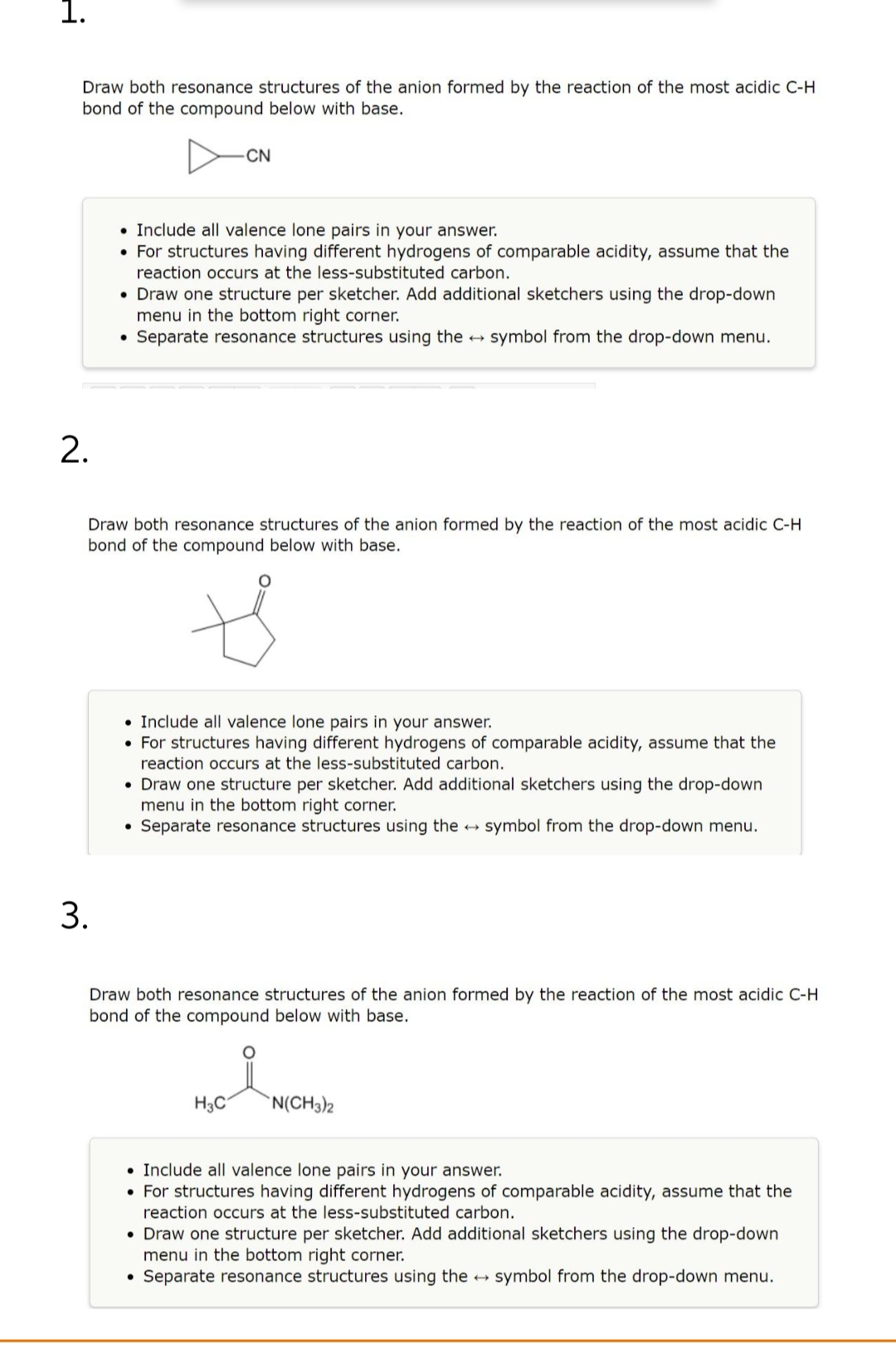Organic Chemistry: A Guided Inquiry
2nd Edition
ISBN:9780618974122
Author:Andrei Straumanis
Publisher:Andrei Straumanis
Chapter27: Amines
Section: Chapter Questions
Problem 5CTQ
Related questions
Question
please do all 3 , very easy question, do in a neat and clean white paper , do not give incomplete solution, if u plan to do only 1 then skip , someone will do all, i will upvote plz do all

Transcribed Image Text:1.
Draw both resonance structures of the anion formed by the reaction of the most acidic C-H
bond of the compound below with base.
2.
3.
. Include all valence lone pairs in your answer.
• For structures having different hydrogens of comparable acidity, assume that the
reaction occurs at the less-substituted carbon.
-CN
• Draw one structure per sketcher. Add additional sketchers using the drop-down
menu in the bottom right corner.
• Separate resonance structures using the → symbol from the drop-down menu.
Draw both resonance structures of the anion formed by the reaction of the most acidic C-H
bond of the compound below with base.
t
. Include all valence lone pairs in your answer.
• For structures having different hydrogens of comparable acidity, assume that the
reaction occurs at the less-substituted carbon.
• Draw one structure per sketcher. Add additional sketchers using the drop-down
menu in the bottom right corner.
• Separate resonance structures using the → symbol from the drop-down menu.
Draw both resonance structures of the anion formed by the reaction of the most acidic C-H
bond of the compound below with base.
H3C
●
N(CH3)2
• Include all valence lone pairs in your answer.
• For structures having different hydrogens of comparable acidity, assume that the
reaction occurs at the less-substituted carbon.
• Draw one structure per sketcher. Add additional sketchers using the drop-down
menu in the bottom right corner.
Separate resonance structures using the symbol from the drop-down menu.
Expert Solution
This question has been solved!
Explore an expertly crafted, step-by-step solution for a thorough understanding of key concepts.
This is a popular solution!
Trending now
This is a popular solution!
Step by step
Solved in 2 steps with 1 images

Knowledge Booster
Learn more about
Need a deep-dive on the concept behind this application? Look no further. Learn more about this topic, chemistry and related others by exploring similar questions and additional content below.Recommended textbooks for you

Organic Chemistry: A Guided Inquiry
Chemistry
ISBN:
9780618974122
Author:
Andrei Straumanis
Publisher:
Cengage Learning

Organic Chemistry: A Guided Inquiry
Chemistry
ISBN:
9780618974122
Author:
Andrei Straumanis
Publisher:
Cengage Learning